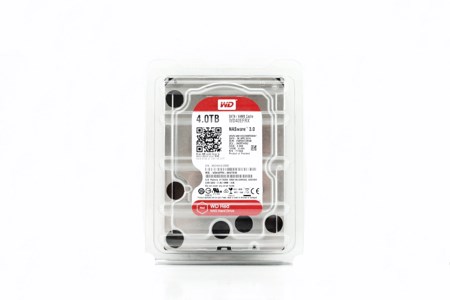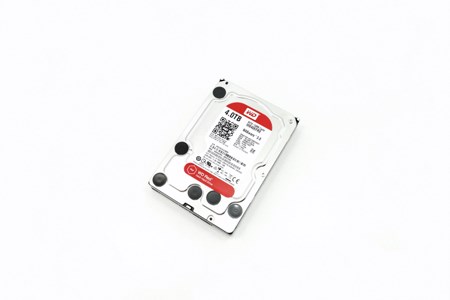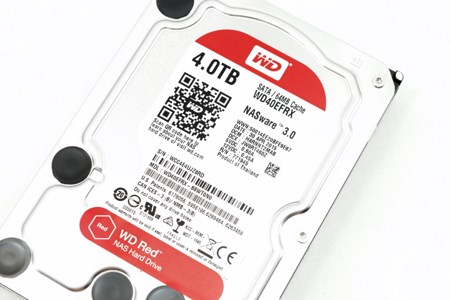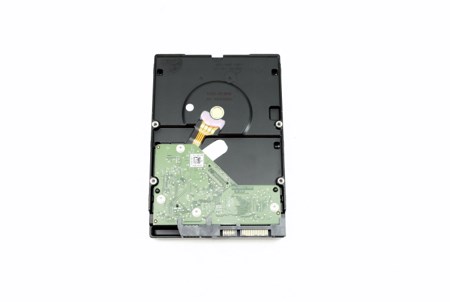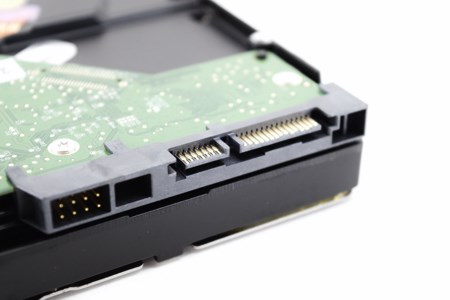INTRODUCTION
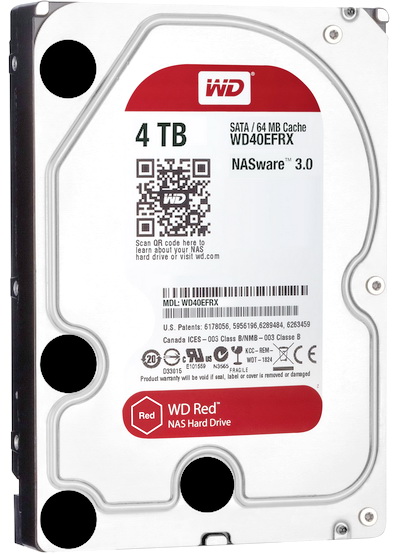
Mechanical hard disk drives have been around for decades now but it wasn't until the introduction of the first NAS (network attached storage) and digital NVR (network video recorder) models that the need for different models was even considered by manufacturers. Sure consumer and enterprise/industrial grade models have been around for as long as i can remember (in the old days we had IDE consumer models and SCSI enterprise ones – who remembers the Atlas?) but now manufacturers had to develop models not only ideal for 24/7 use, advanced error correction technologies and even improved RAID capabilities (just like enterprise models) but also with reduced power consumption and temperatures. Both Seagate and Western Digital currently have several NAS and NVR focused hard disk drive models in their product lines (WD was actually first) and since we've always had a soft spot for NAS reviews today we'll be testing the WD RED 4TB (WD40EFRX) but unlike the very first models released up until roughly 2 years ago this features the latest NASware 3.0 firmware version.
WD, a Western Digital company, is a long-time innovator and storage industry leader. As a storage technology pacesetter, the company produces reliable, high-performance hard disk drives and solid state drives. These drives are deployed by OEMs and integrators in desktop and mobile computers, enterprise computing systems, embedded systems and consumer electronics applications, as well as by the company in providing its own storage products. WD’s leading storage devices and systems, networking products, media players and software solutions empower people around the world to easily save, store, protect, share and experience their content on multiple devices. WD was established in 1970 and is headquartered in Irvine, California.
Although NAS devices/servers work just fine with whatever HDD you mount inside there are several advantages by using a NAS focused model including advanced error correction, faster RAID rebuild, reduced power consumption and temperatures. Error correction technologies can safeguard your data while faster RAID rebuild times can be the difference between just a few hours and days. Certainly power consumption may not seem much to most people since at the end of the day the difference between a normal and a NAS focused HDD is not really great but for 24/7 use electricity costs actually add up. Temperatures may also not seem as something great but the more heat building up inside a small device like a NAS the more problems you may run into in the long run. The Red drives by WD focus on those four aspects and ontop of that they also use the latest NASware 3.0 firmware which features shock protection (thanks to a multi-axis shock sensor), dynamic fly height technology (adjusts each read-write function to compensate and protect the data), vibration protection (monitors the drive to correct both linear and rotational vibration in real time)m intelligent error recovery controls and command completion. The drive itself has 4 platters that spin at 5400RPM (features Intellipower technology) and a total of 64MB cache while Western Digital covers it with a 5 year warranty and gives it a MTBF of 1 million hours.
SPECIFICATIONS AND FEATURES

THE WD40EFRX
Typically we received our sample inside a clear clamshell box (bulk).
Nothing new in terms of design since it’s almost identical to the 3TB model (WD30EFRX) which we reviewed 3 years ago.
Once again a large sticker at the top includes the product serial and part numbers, factory roll out date (roughly 1 year ago), cache size, capacity, electrical specifications, a 2d barcode and several certification logos.
At the other side of the drive we see the PCB without any components on the exterior (all are placed inside for optimal protection).
Moving at the rear of the drive we find the usual SATA power and data connectors along with 8 pins (probably used for firmware updates).
TEST BED
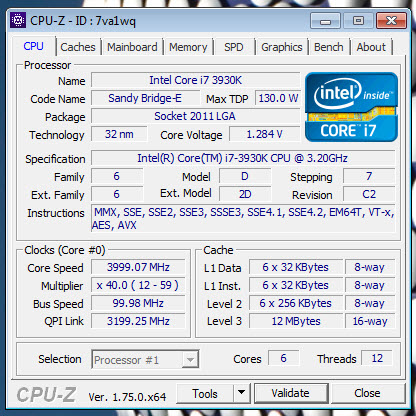

TESTING METHODOLOGY
Thoroughly testing hard disk drives may require time and patience but that's just about it. Of course that doesn't mean that one must take it lightly, at least not when people base their decision on your results. True some choose to only use 2 or 3 benchmarking suits in order to measure the performance of a drive or drives since quite honestly most benchmarking suites do tend to agree with each other (so it's not really wrong) but we always like to take things a step further not because we have to but because we want to be almost 100% certain of the results we get and post in our charts.
So in this kind of reviews we will use a total of 7 different benchmarking suites in an effort to bring you the most accurate results across the board. Now the only reason why i say effort is because real-world usage is not always on par with what results one gets by running several benchmarks on a drive and that's mainly because there are many variables at work from ambient temperatures to hardware configurations and even firmware versions. The benchmarking applications we use are the AIDA64 suite (former Everest Pro), HD Tune Professional, HD Tach RW, ATTO, Sisoftware Sandra Pro, Crystal Disk Mark 64bit and the PCMARK 7 (secondary storage suite). These benchmarking tools are the best in what they do and as you will also see later on their results more or less agree. Each test is performed a total of 6 times and then the average is recorded into the charts. Temperatures are recorded using Hard Disk Sentinel and after 45 minutes of continuous testing in a 23 degrees Celsius temperature controlled room. Finally we also use an ExTech HD600 dBA meter on each of the drives (5cm away) in order to accurately record their noise levels (during access), although if you don't turn off all system fans when doing so it's quite possible that you will never even hear the drive. The operating system as usual is a fresh installation of Microsoft Windows 7 Ultimate Service Pack 1 with every update installed up until the 6th of May 2016.
TEST RESULTS - AIDA64 / ATTO


TEST RESULTS - HD TACH RW / HD TUNE PRO


TEST RESULTS - SISOFTWARE SANDRA PRO / CRYSTAL DISK MARK X64
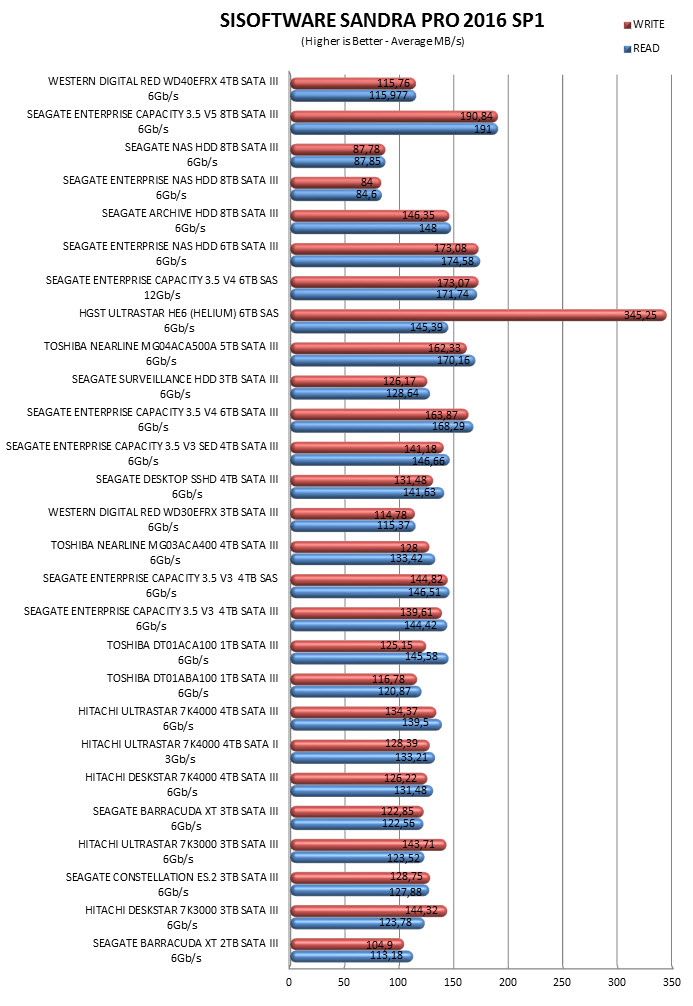

TEST RESULTS – PCMARK 7 / TEMPERATURES / NOISE LEVELS
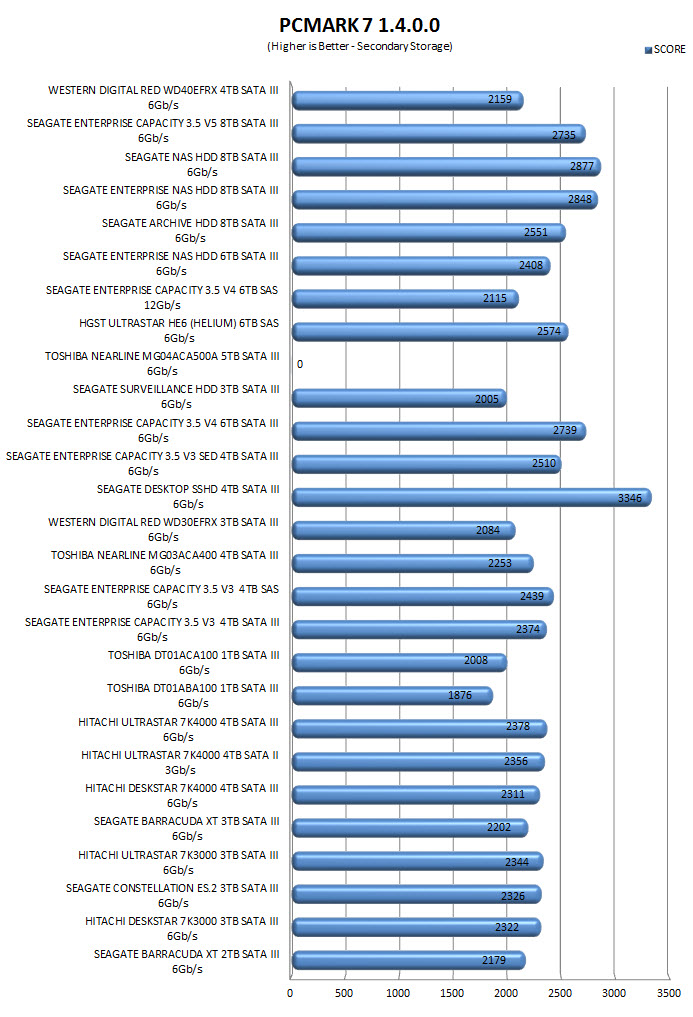
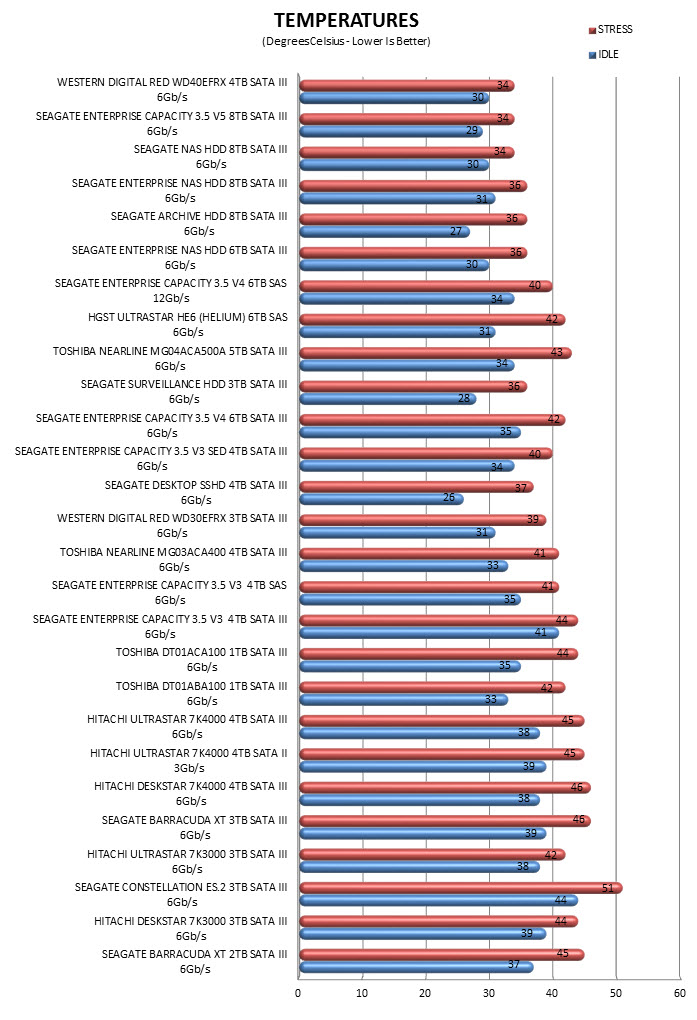
 ……..
……..
CONCLUSION
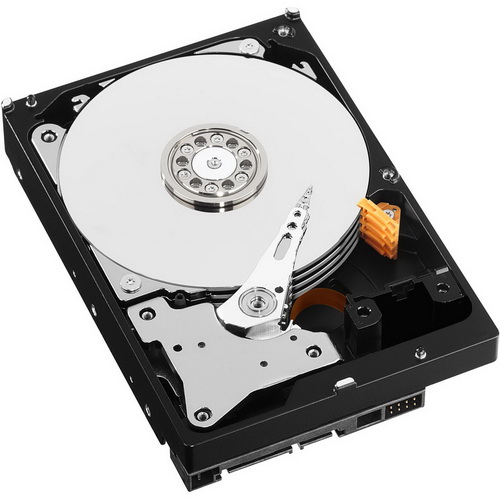
When choosing which drives to get for use with a NAS performance should not be the first thing consumers should look for and that actually makes sense since lower power consumption, temperatures and even noise levels could be more “beneficial” (error correction technologies too but that's not something we can measure). With that in mind the Red line of HDDs by Western Digital does extremely well as you can all tell from our charts. There are however obviously those who will also look at performance levels and in that area the WD40EFRX has really nothing special to show especially since when the “regular” NAS series by Seagate leads in almost every test (aside in sisoftware sandra pro and noise levels). We can’t of course directly compare the 4TB Red with the 8TB NAS HDD so we do hope Western Digital will send a higher capacity of this line for us to check (or from the Red Pro line).
In terms of price the Red 4TB WD40EFRX by WD does quite well since it currently retails for USD149.99 inside the USA (Amazon.com) and for 167Euros inside the EU (Amazon.co.uk) but again finishes after the equivalent NAS HDD by Seagate which is also roughly 8% cheaper. What saves the WD40EFRX is its lower electrical consumption (4.5W max vs the 9W of the NAS HDD) and its 5 year warranty (compared to the 3 years of the NAS HDD) so not all is lost. In the end if you care more about performance the NAS HDD by Seagate is really a one way (unless you can afford the more expensive Enterprise NAS line) but if reduced power consumption with low noise levels and a longer warranty are more important for you the WD Red 4TB (WD40EFRX) is for you and that’s why it gets our Golden Award.

PROS
- Build Quality (MTBF Of 1.000.000 Hours)
- Good Read/Write Performance
- NASware 3.0 Features
- Low Temperatures, Noise Levels & Power Consumption
- 24/7 Support & 5 Years Warranty
CONS
- Overall Performance & Price (Compared To the Competition)

 O-Sense
O-Sense





